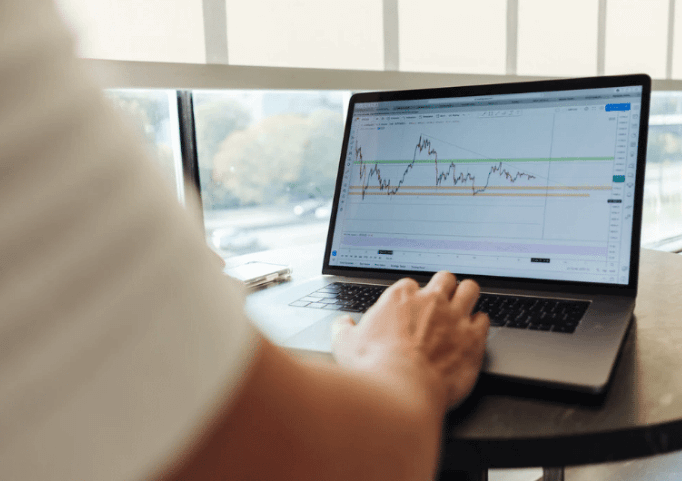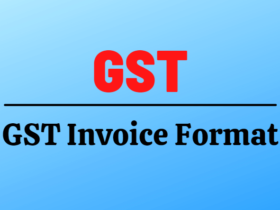What Is an ETF?
The ETF stands for exchange-traded funds. An ETF allows you to buy a large number of securities – stocks, bonds, or commodities – simultaneously.
An exchange-traded fund (ETF) is a bundle of investments that trade on a stock like an exchange. ETFs can diversify your portfolio and are relatively cheap.
Exchange-traded funds (ETFs) are ideal for beginner investors, as they have many advantages such as low expense ratios, abundant liquidity, range of investment options, diversification, low investment limits, and so on.
These features make ETFs the perfect vehicle for various trading and investment strategies used by new traders and investors. How to Invest Money.
Like an individual stock, ETFs are traded on the exchange throughout the day and their tons of ETFs to choose from.
Some ETFs are filled with stocks, some are bonds, and others track the performance of a certain market segment.
ETFs offer the best features of two popular assets: they have the diversification benefits of mutual funds while trading stocks with ease.
READ ALSO: What Is an Index Fund? And How to Invest in Index Funds?
How to Invest in ETFs
1. Open a Brokerage Account
You will need a brokerage account before buying or selling ETFs. Most online brokers now offer commission-free stock and ETF trades, so cost is not a major consideration.
However, The best course of action is to compare the features and platforms of each broker.
If you are a new investor, it may be a good idea to choose a broker that offers a wide range of educational facilities, such as TD Ameritrade (NASDAQ: AMTD), E * Trade (NASDAQ: ETFC), or Schwab (NYSE): SCHW), but there are many other excellent brokers to choose from.
2. Choose your first ETFs
For beginners, passive index funds are usually the best way to go. Index funds are cheaper than their actively managed counterparts, and the reality is that most actively managed funds do not beat their benchmark indexes over time.
With that in mind, here’s a list of ETFs for beginners who are just starting to build their portfolios:
- Vanguard S&P 500 ETF (NYSEMKT: VOO) — Large U.S. companies
- Schwab U.S. Mid-Cap ETF (NYSEMKT: SCHM) — Midsize U.S. companies
- Vanguard Russell 2000 ETF (NYSEMKT: VTWO) — Smaller U.S. companies
- Schwab International Equity ETF (NYSEMKT:SCHF) — Larger non-U.S. companies
- Schwab Emerging Markets Equity ETF (NYSEMKT: SCHE) — Companies from countries with developing economies
- Vanguard High-Dividend ETF (NYSEMKT: VYM) — Stocks that pay above-average dividends
- Schwab U.S. REIT ETF (NYSEMKT:SCHH) — Real estate investment trusts
- Schwab U.S. Aggregate Bond ETF (NYSEMKT: SCHZ) — Bonds of all different varieties and maturity lengths
3. Let your ETFs do the hard work for you
It is important to note that ETFs are usually designed for maintenance-free investment.
However, New investors have a bad habit of checking their portfolios and have to be sentimental, knee-jerk for major market moves.
In fact, the average fund investor significantly reduces the market over time, and over-trading is the main reason for this.
Therefore, once you buy shares of some great ETFs, the best advice is to leave them alone and let them do what they intend to do: produce excellent investment growth in the long run.
READ ALSO: How To Invest In Real Estate: Best Ways to Get Start
ETFs vs. Mutual Funds
The key difference between these two types of investment vehicles is how you buy and sell them.
ETFs and mutual funds are similar in that they both allow you to buy a large number of securities (stocks, bonds) at one time.
The main difference between ETFs and mutual funds is that ETFs trade like stocks throughout the day in the market. On the other hand, mutual funds trade only once per day after the market closes.
Mutual funds can be purchased through a brokerage or directly from the issuer, but the major point is that the transaction is not instantaneous.
Another difference is that ETFs are generally cheaper than mutual funds because they have lower management fees.
On the other hand, ETF trades in the same way as shares on major exchanges like NYSE and Nasdaq.
Instead of investing a set dollar amount, you choose how many shares you want to buy. Because they trade like stocks, ETF prices fluctuate continuously throughout the trading day, and you can buy ETF shares whenever the stock market is open.
ETFs are increasingly popular, but the number of mutual funds still available is high.
There is generally more turnover within mutual funds (especially those that are actively managed) relative to an ETF, and such purchases and sales can lead to capital gains.
READ ALSO: How to Start Investing in Stocks
Pros and cons of ETFs
Pros
- Low barrier to entry: There is no minimum amount required to start investing in ETFs. All you need is enough to cover the price of one share and any related commissions or fees.
- Diversification: Instead of attempting to buy each security individually (which would be extremely time consuming), you can quickly and easily purchase an ETF that contains an array of securities.
- Easy to buy and sell: ETFs are traded just like an individual stock. You can buy and sell at any point throughout the day.
- Tax-efficient: As long as you do not sell your ETF at a profit, you do not pay any tax. You are in control when you decide to sell and pay the necessary taxes.
Cons
- Trading costs: While one of the benefits of ETFs is that they generally have lower fees than mutual funds, you may still have to pay fees while trading. While many discount brokerages have established zero-duty trading, not all have them.
- Volatility: ETFs are not immune to instability. While buying ETFs may be more stable than keeping all your money in individual stocks, the market is still prone to swings. You can reduce your risk by purchasing an ETF that tracks the entire market (S&P 500 or Dow Jones) rather than buying an ETF in one market.
Different Types of ETFs
1. Stock ETFs
They contain stocks and are usually for long-term growth. While generally less risky than individual stocks, they are slightly more risky than some others.
2. Commodity ETFs
Commodities are raw materials that can be bought or sold, such as gold, coffee, and crude oil. Commodity ETFs allow you to bundle these securities into a single investment.
With commodity ETFs, it is especially important to know what is inside them – whether you have ownership in the physical reserves of the commodity funds, or own equity in the companies producing, transporting, and storing these goods.
3. Bond ETFs
Unlike individual bonds, bond ETFs do not have a maturity date, so the most common use for them is to make regular cash payments to the investor. These payments come from the interest generated by individual bonds within the fund. Bond ETFs can be an excellent, low-risk supplement to stock ETFs.
4. International ETFs
As with US stocks and bonds, foreign stocks are widely recommended for building diversified portfolios. International ETFs are an easier and generally less risky way to find these foreign investments. These ETFs may include investments in individual countries or specific country blocks.
5. Sector ETFs
The US stock market is divided into 11 regions, and each is made up of companies that operate within that sector. Sector ETFs provide a way to invest in specific companies within those sectors, such as healthcare, financial or industrial sectors.
These can be particularly useful for investors tracking business cycles, as some sectors perform better during the expansion period, others better during the contraction period. Typically, these typically carry a higher risk than wide-market ETFs.








